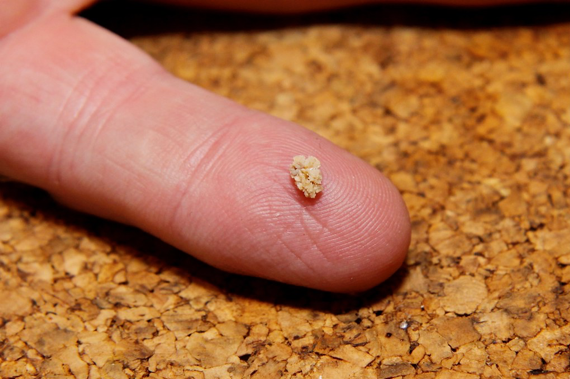What are kidney stones and what is the process of removal? Doctors and scientists refer to kidney stones by multiple names. Some of the most commonly used phrases include renal calculi, urolithiasis, and nephrolithiasis. Kidney stones refer to mineral and salt deposits that solidify inside the kidneys and obstruct the urine flow leading to kidney damage. Since proper excretion doesn’t occur, kidneys experience massive damage due to urine pooling inside the canals.

(Source)
A range of factors such as obesity, supplements, high-profile medications, and diet deficiencies can cause kidney stones. Once kidney stones form, they can damage nearly any part of your urinary tract. That means your urinary tract extending from the kidneys to the bladder can suffer various issues and problems leading to massive discomfort. Once the minerals start to stick together, they crystallize and solidify to become stones.
It’s not possible to easily pass kidney stones with urine, and holding them inside the kidney canals is quite painful, as most patients claim. Therefore, you must acquire the best treatment methods at the right urological health institute near you to remove kidney stones as quickly as possible.
Kidney Stones: Staghorn Calculus
The term “staghorn kidney stone” and “staghorn calculus or calculi” emerged from the shape that very large kidney stones take when they haven’t been dealt with on time through effective treatments. A staghorn calculus refers to a large kidney stone that takes more than a single branch of the collecting system inside the kidney’s renal pelvis. This also affects the urinary tract on a massive scale since the said tract begins from the kidneys.
Urine forms in the kidneys when the kidneys remove waste matter and excess water from the blood. Once enough urine is collected inside the renal pelvis, it starts to travel through each ureter (a tube) in each kidney towards the bladder. Consequently, the bladder keeps collecting the urine until it’s full, after which the nerves signal the brain, and the urge to urinate is produced.
But, when stones form in the kidneys, urine collection becomes difficult and painful. Note that the urinary system is the same in both men and women, but the urethra is longer in men due to the encirclement of the prostate-staghorn calculus forms in the renal pelvis leading to difficult urine flow towards the bladder.
Percutaneous Nephrolithotomy
It’s a procedure aimed at kidney stone removal from the body. Keep in mind that very small kidney stones can, quite painfully, pass through the body via urine flow. However, some kidney stones are extremely difficult to pass from the body through urine, so surgery becomes essential. If the kidney stones aren’t removed, they can cause a range of kidney issues and problems. For your information, large kidney stones damage the kidney walls canals and may even result in kidney failure.
Also, the percutaneous nephrolithotomy procedure is recommended once the alternative treatment methods fail.
The Procedure
The procedure can take place on both an inpatient and outpatient basis. It’s best to see a professional urologist with surgical skills and years of experience in handling various kidney health issues and diseases. When the kidney stones become so large that they become resistant to other treatment methods, urologists recommend the patient to go under the complicated percutaneous nephrolithotomy procedure.
The procedure can last as long as 3-4 hours. The surgeon begins by giving the preferred type of anesthetic to the patient. Following that, the urologist uses X-ray guidance to insert a fine tube inside the small incision made around the flank area of the patient. Once the tube is entered and it reaches the desired location on the kidney (the one with stones), the surgeon will insert a small telescope through the tube.

The telescope helps in visualizing the internal kidney condition and highlights the kidney stones on video feed through advanced equipment. Using extremely fine surgical tools, your urologist will break down the kidney stones and remove them from the body.
In some cases, surgeons also opt for laser therapy, also known as lithotripter, to help in breaking down kidney stones into smaller pieces for easier removal. Post-procedure pain occurs very rarely, and most surgeons only advise a short-hospital stay so that they can monitor the patients’ immediate recovery.
After-Procedure Results
Once the kidney stone surgery is complete, the doctor will schedule several appointments, which will generally be within 4-6 weeks post-procedure. The doctor will use ultrasound and/or X-rays to monitor kidney health and provide insight on the urine flow that’s taking place after kidney stones’ removal. If any issue is detected, the doctor will recommend further solutions as well.
Kidney Stones & Removal: Conclusion
Are you struggling with kidney stones? Is your lifestyle getting hectic and difficult due to kidney stone-associated complications? At Fifth Avenue Urology, we help solve all health complications related to urological disorders and diseases. Dr. Yaniv Larish MD and Dr. Leonard Glickman MD are the top two choices among the best urologists in NYC. We provide healthcare where both doctors work in harmony to serve patients with kidney stones and other urological health problems.
Make an appointment today and get specialized consultation from Dr. Larish or Dr. Glickman. Give us a call at 212-675-3186 to learn more about our services and consultation.
